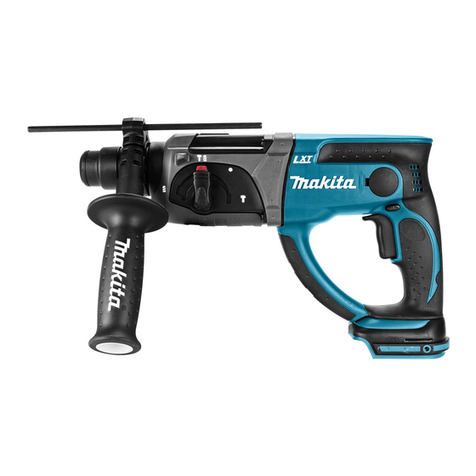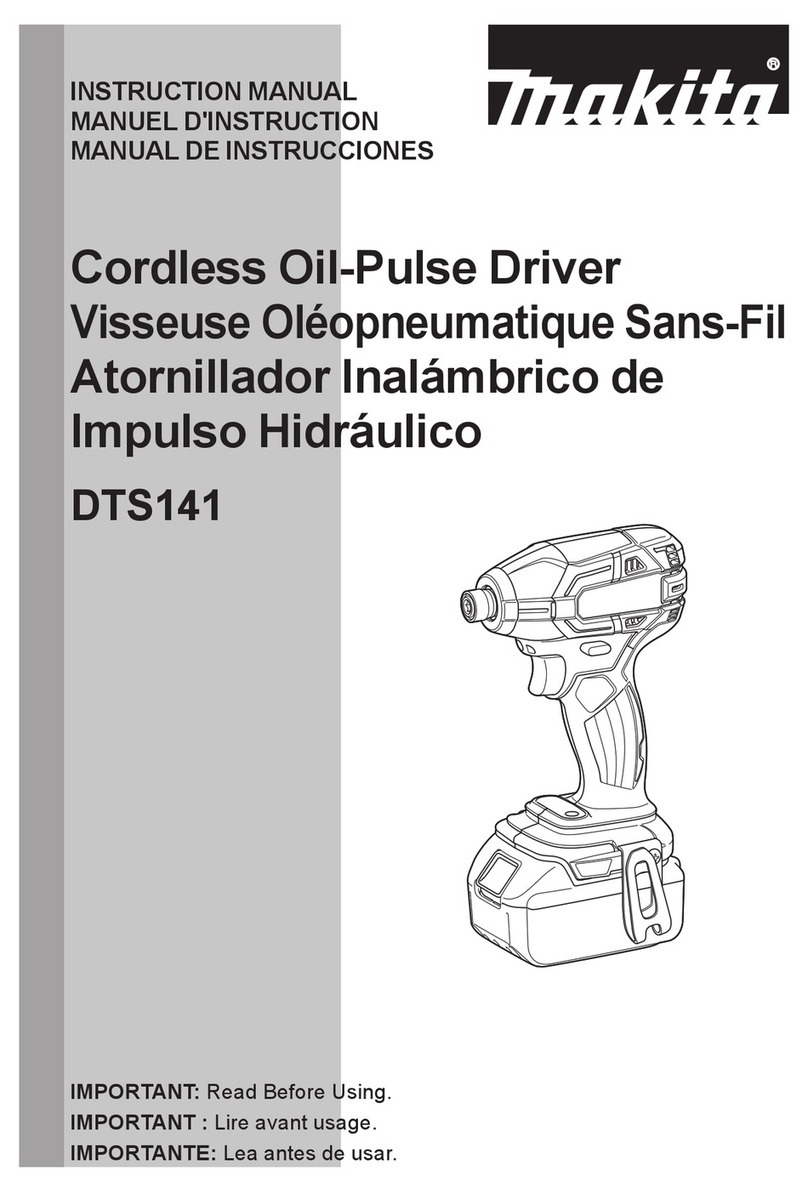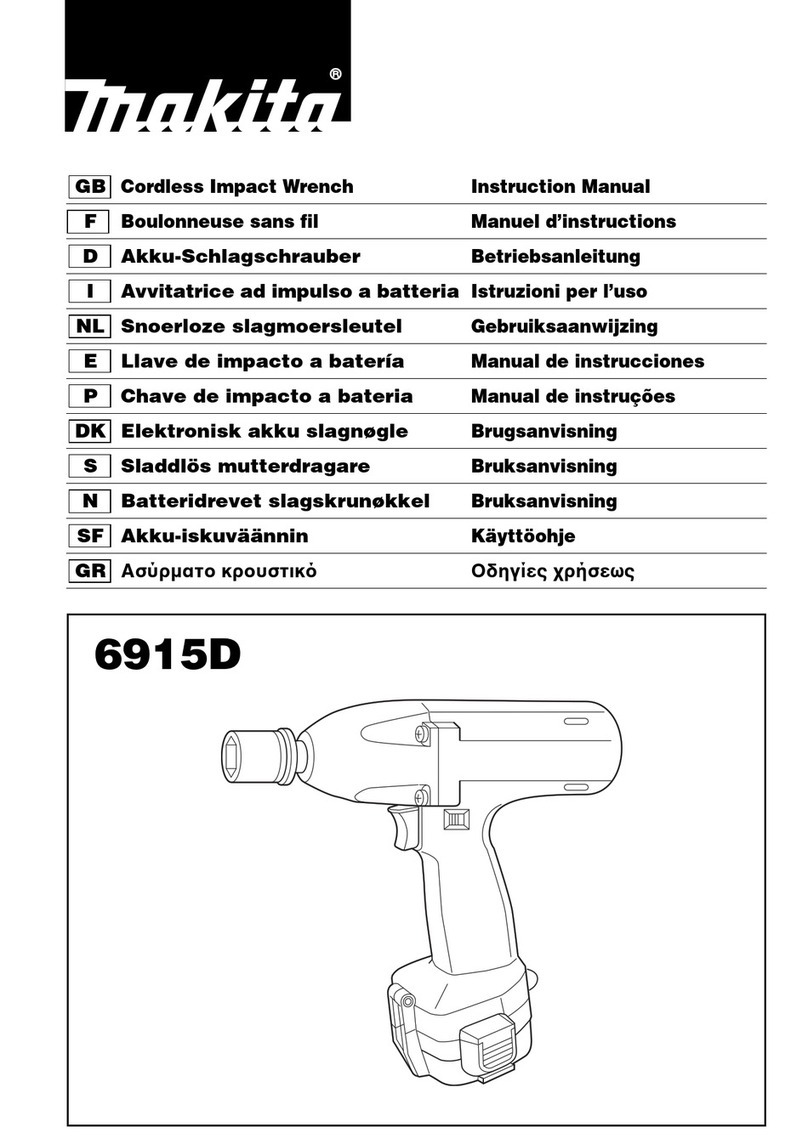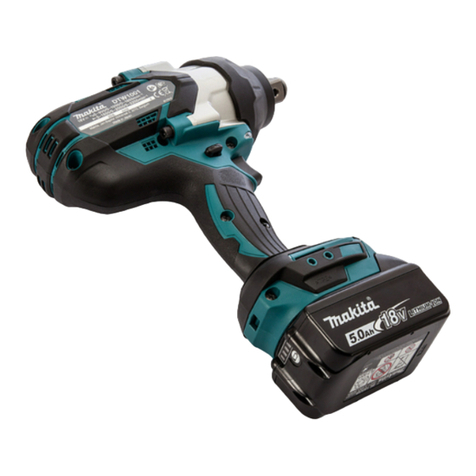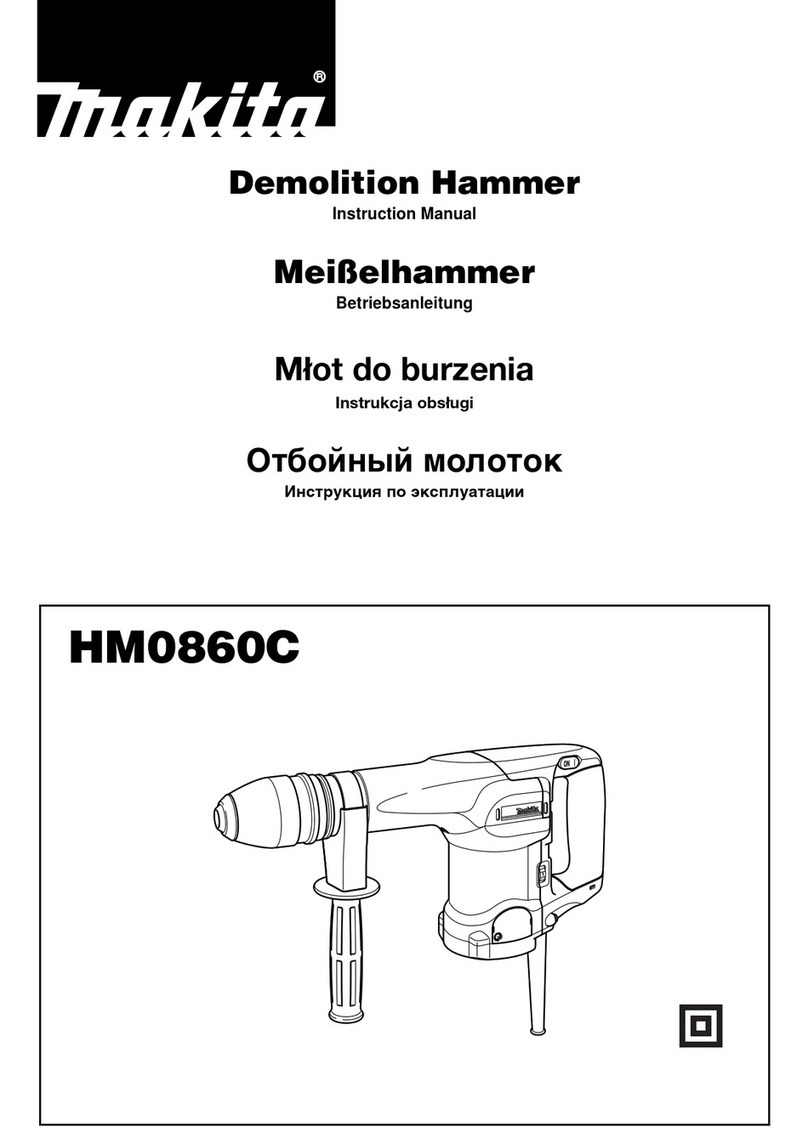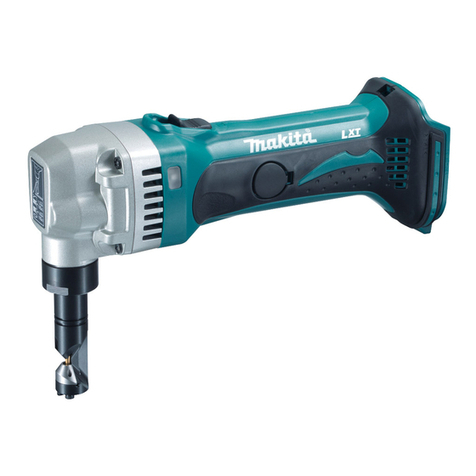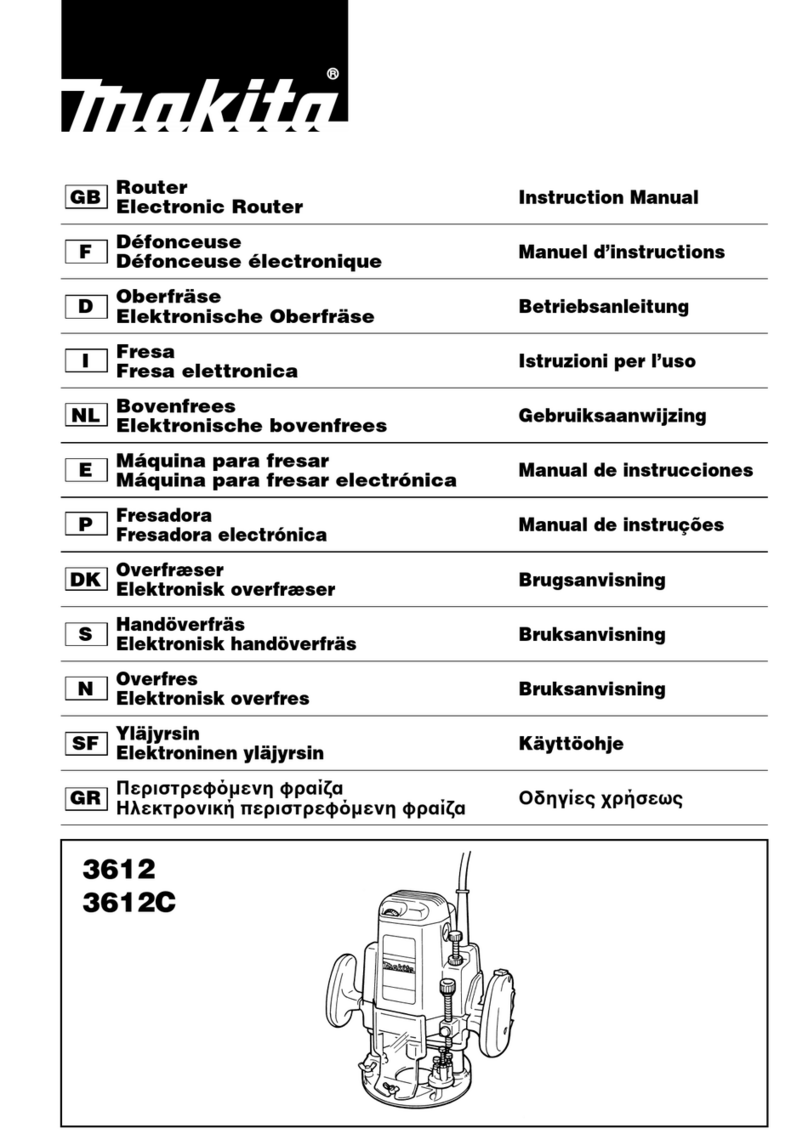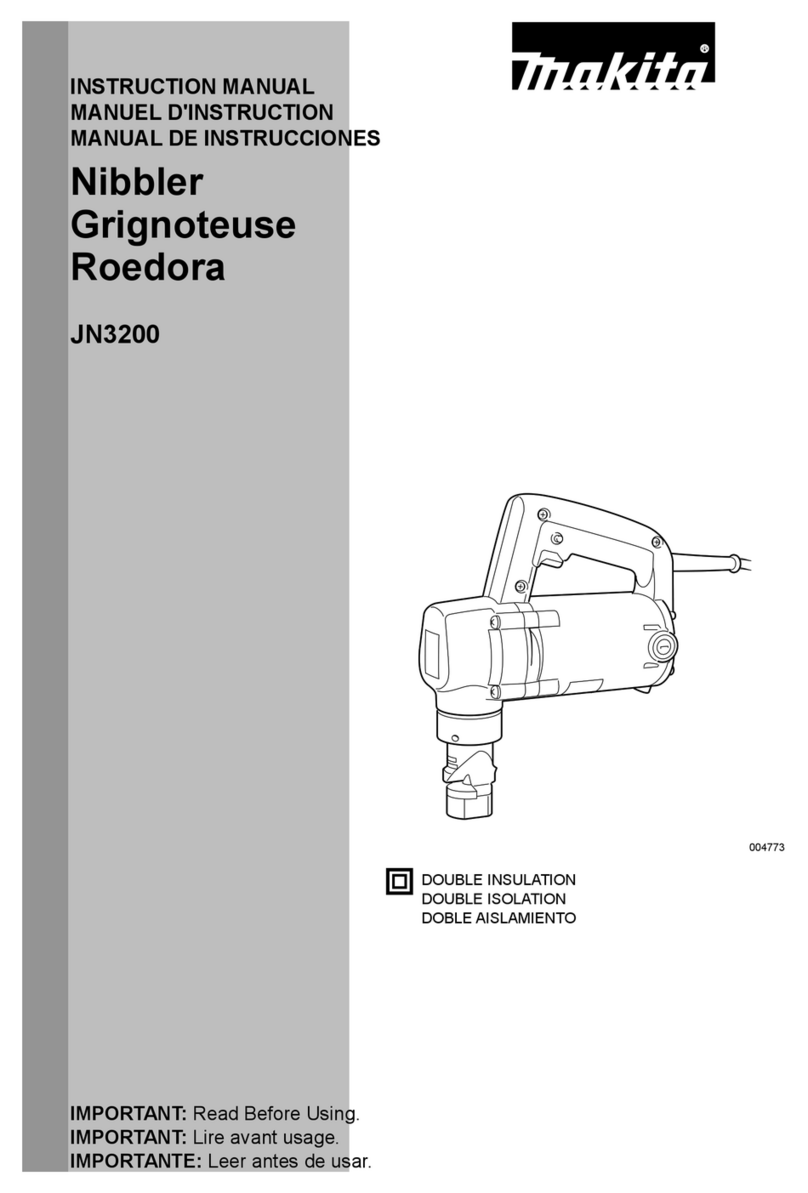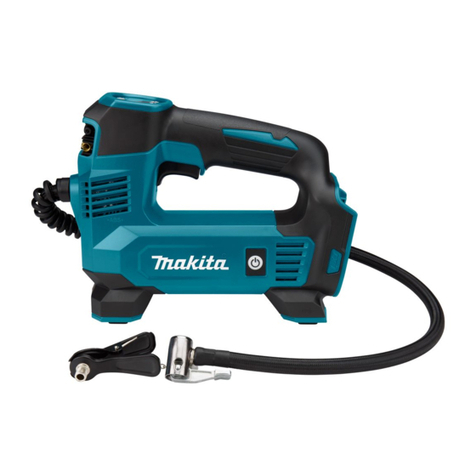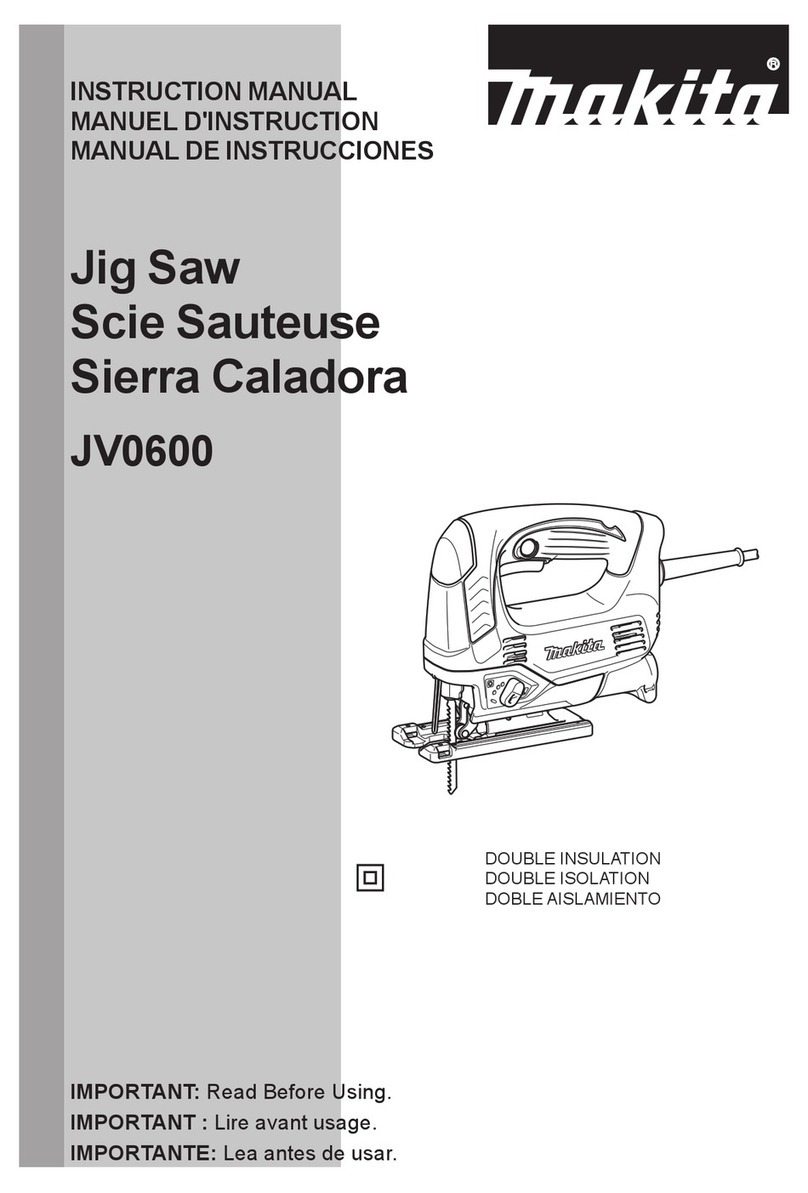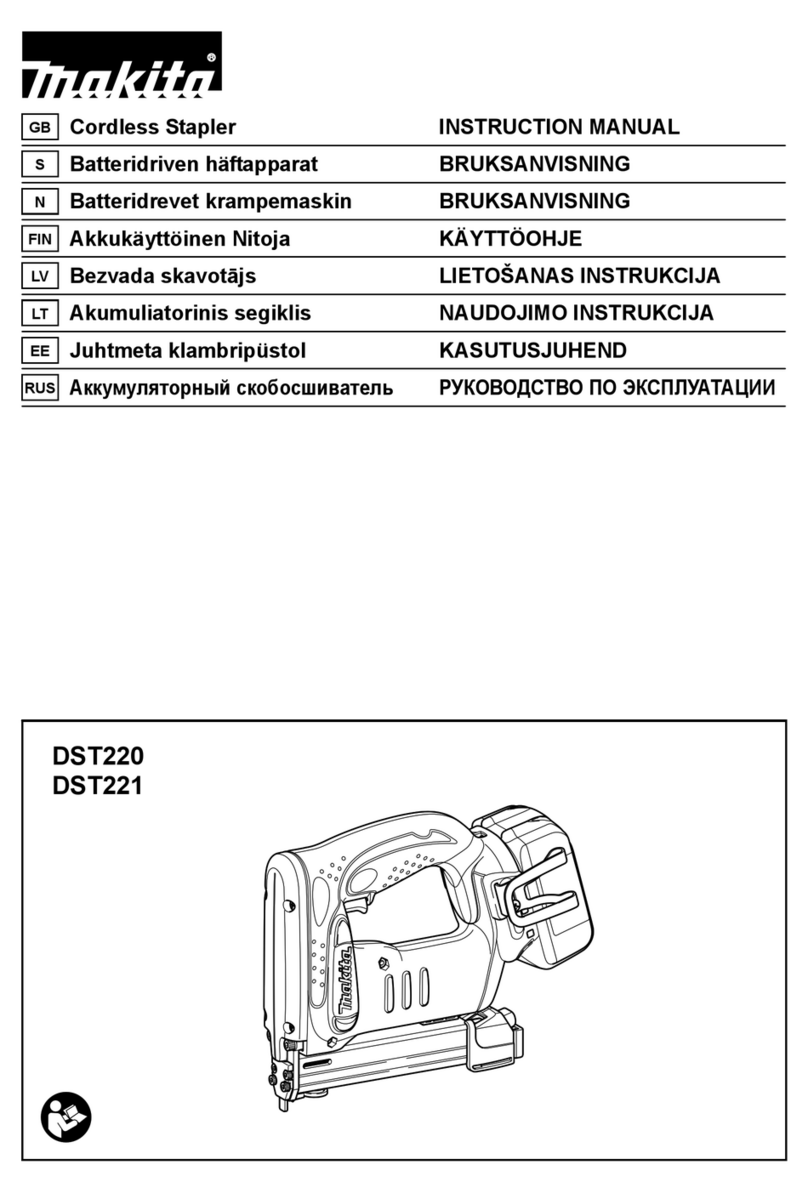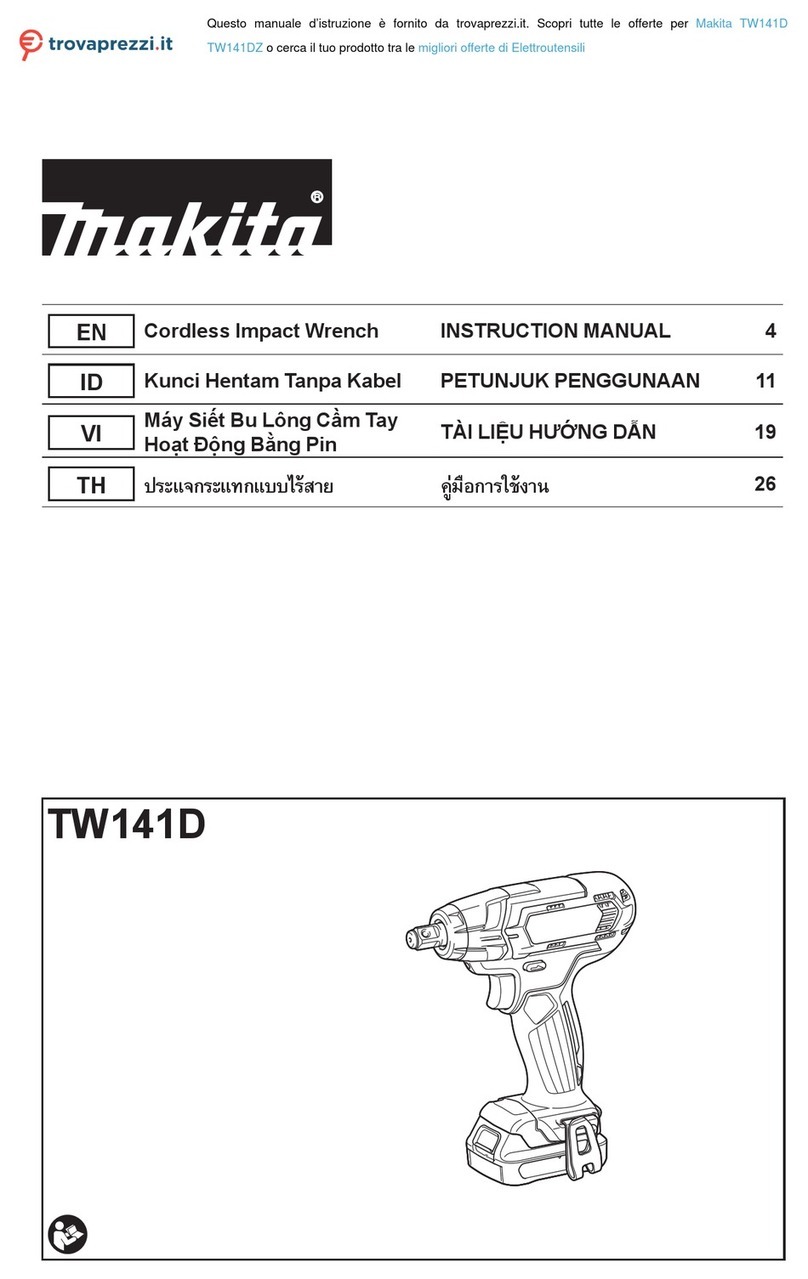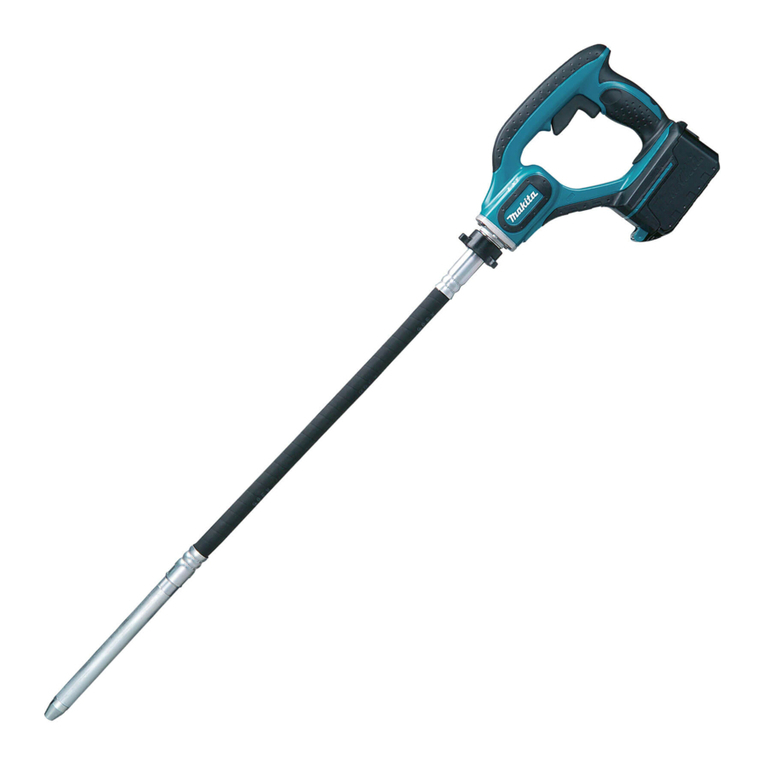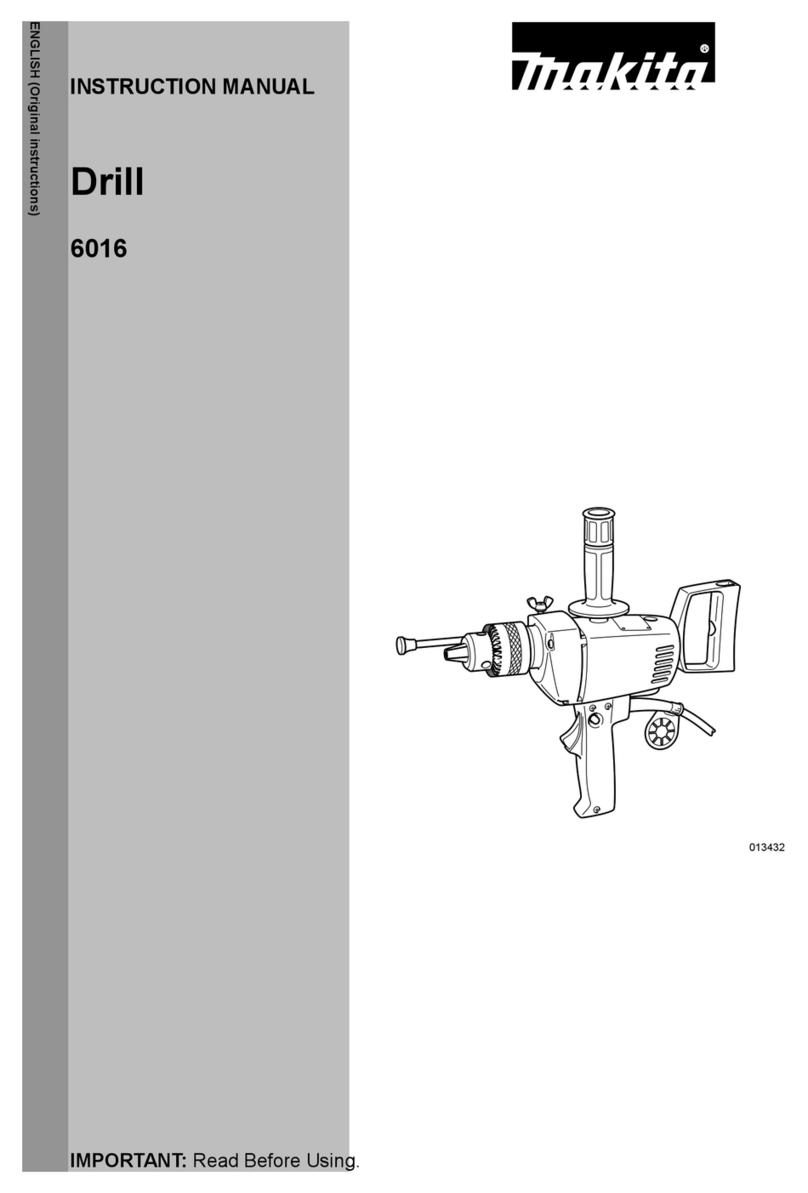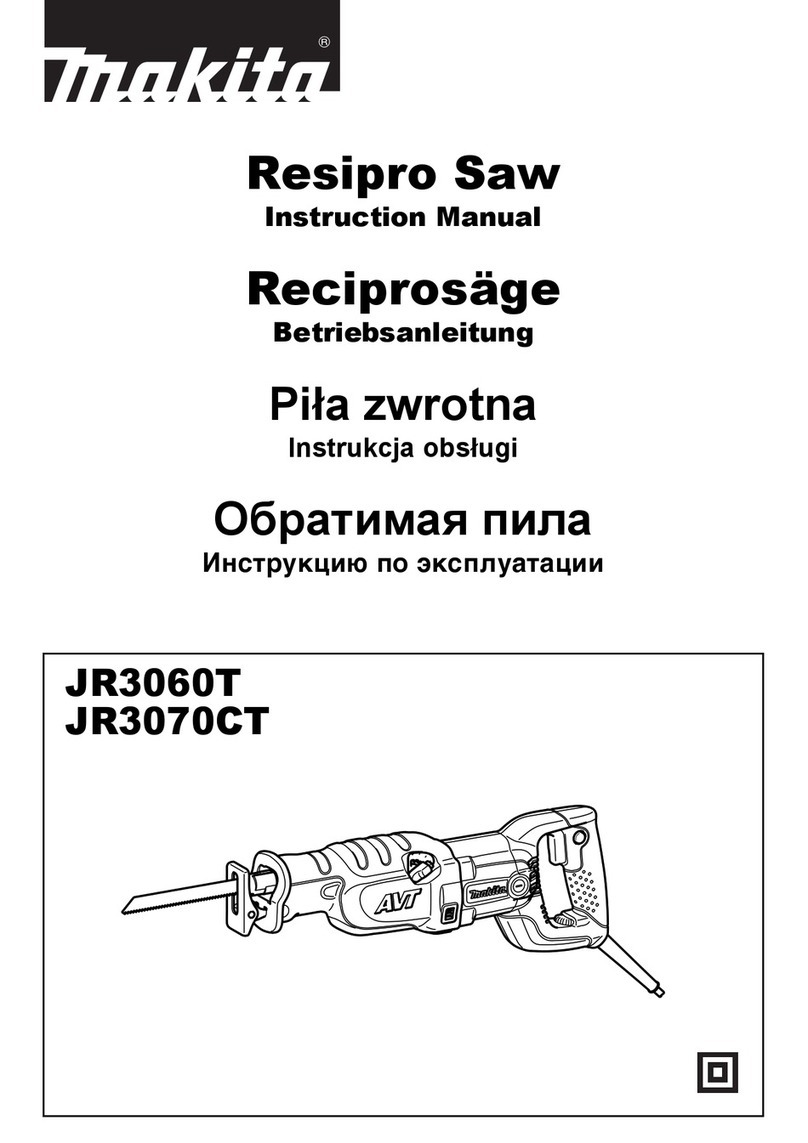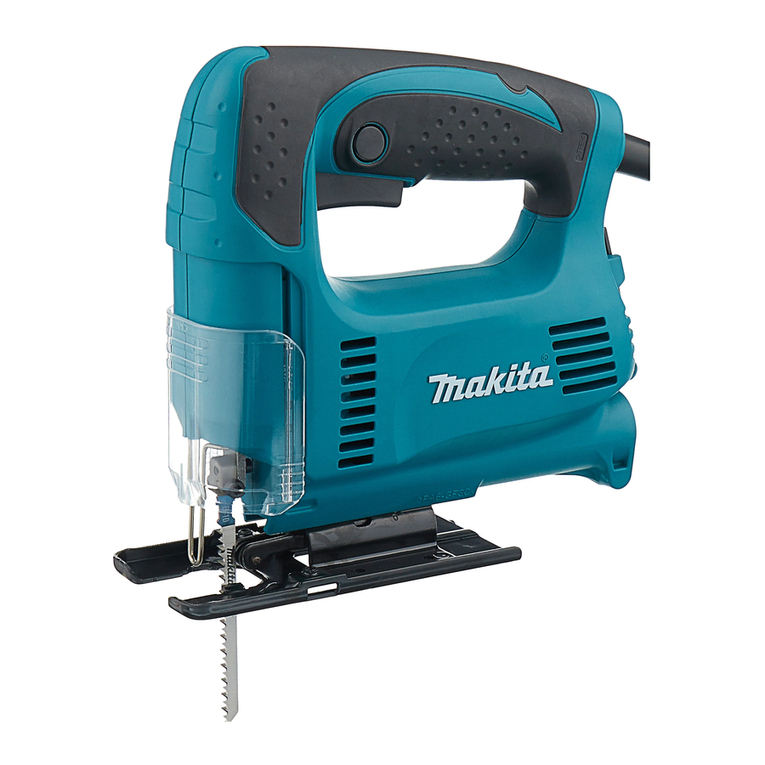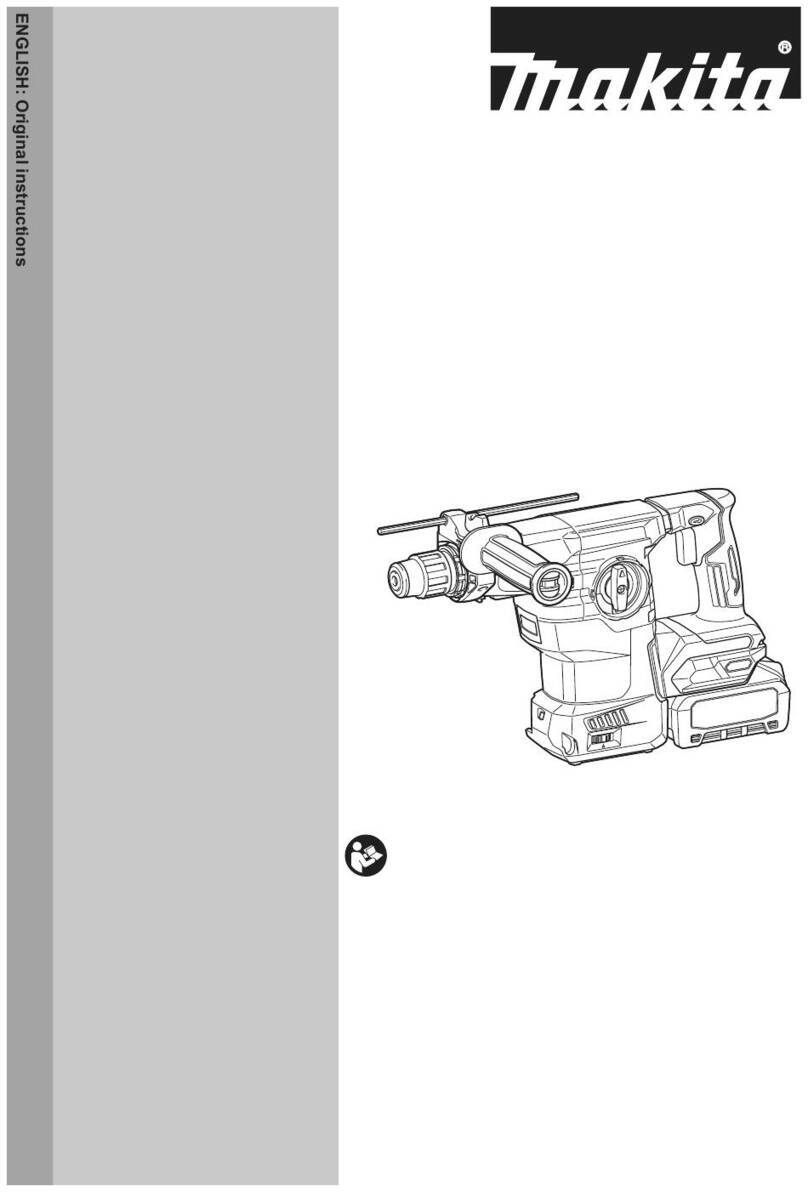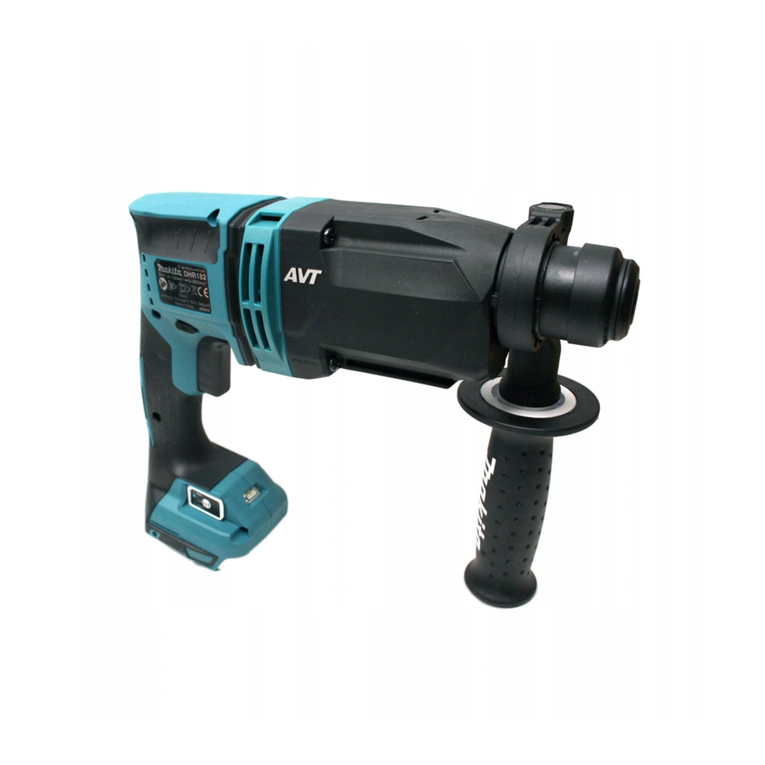7
to lift up and out of the workpiece toward the
operator;
- when the blade is pinched or bound tightly by the
kerf closing down, the blade stalls and the motor
reaction drives the unit rapidly back toward the
operator;
- if the blade becomes twisted or misaligned in the
cut, the teeth at the back edge of the blade can dig
into the top surface of the wood causing the blade to
climb out of the kerf and jump back toward the
operator.
Kickback is the result of saw misuse and/or incorrect
operating procedures or conditions and can be
avoided by taking proper precautions as given below.
•Maintain a firm grip with both hands on the saw
and position your arms to resist kickback forces.
Position your body to either side of the blade,
but not in line with the blade. Kickback could
cause the saw to jump backwards, but kickback
forces can be controlled by the operator, if proper
precautions are taken.
•When blade is binding, or when interrupting a
cut for any reason, release the trigger and hold
the saw motionless in the material until the blade
comes to a complete stop. Never attempt to
remove the saw from the work or pull the saw
backward while the blade is in motion or
kickback may occur. Investigate and take
corrective actions to eliminate the cause of blade
binding.
•When restarting a saw in the workpiece, centre
the saw blade in the kerf and check that saw
teeth are not engaged into the material. If saw
blade is binding, it may walk up or kickback from the
workpiece as the saw is restarted.
•Support large panels to minimise the risk of
blade pinching and kickback. Large panels tend to
sag under their own weight. Supports must be
placed under the panel on both sides, near the line
of cut and near the edge of the panel.
To minimize the risk of blade pinching and kickback.
When cutting operation requires the resting of the saw
on the workpiece, the saw should be rested on the
larger portion and the smaller piece cut off.
To avoid kickback, do support board or panel near
the cut. (Fig. 2)
Do not support board or panel away from the cut.
(Fig. 3)
•Do not use dull or damaged blades. Unsharpened
or improperly set blades produce narrow kerf
causing excessive friction, blade binding and
kickback. Keep blade sharp and clean. Gum and
wood pitch hardened on blades slows saw and
increases potential for kickback. Keep blade clean
by first removing it from tool, then cleaning it with
gum and pitch remover, hot water or kerosene.
Never use gasoline.
•Blade depth and bevel adjusting locking levers
must be tight and secure before making cut. If
blade adjustment shifts while cutting, it may cause
binding and kickback.
•Use extra caution when sawing into existing
walls or other blind areas. The protruding blade
may cut objects that can cause kickback. For plunge
cuts, retract lower guard using retracting handle.
10. Check lower guard for proper closing before each
use. Do not operate the saw if lower guard does
not move freely and close instantly. Never clamp
or tie the lower guard into the open position. If saw
is accidentally dropped, lower guard may be bent.
Raise the lower guard with the retracting handle and
make sure it moves freely and does not touch the
blade or any other part, in all angles and depths of cut.
To check lower guard, open lower guard by hand, then
release and watch guard closure. Also check to see
that retracting handle does not touch tool housing.
Leaving blade exposed is VERY DANGEROUS and
can lead to serious personal injury.
11. Check the operation of the lower guard spring. If
the guard and the spring are not operating
properly, they must be serviced before use. Lower
guard may operate sluggishly due to damaged parts,
gummy deposits, or a build-up of debris.
12. Lower guard may be retracted manually only for
special cuts such as “plunge cuts” and
“compound cuts.” Raise lower guard by retracting
handle and as soon as blade enters the material,
the lower guard must be released. For all other
sawing, the lower guard should operate automatically.
13. Always observe that the lower guard is covering
the blade before placing saw down on bench or
floor. An unprotected, coasting blade will cause the
saw to walk backwards, cutting whatever is in its path.
Be aware of the time it takes for the blade to stop after
switch is released. Before setting the tool down after
completing a cut, be sure that the lower guard has
closed and the blade has come to a complete stop.
14. ALWAYS hold the tool firmly with both hands.
NEVER place your hand or fingers behind the saw.
If kickback occurs, the saw could easily jump
backwards over your hand, leading to serious
personal injury. (Fig. 4)
15. Never force the saw. Forcing the saw can cause
uneven cuts, loss of accuracy, and possible
kickback. Push the saw forward at a speed so that
the blade cuts without slowing.
16. Use extra caution when cutting damp wood,
pressure treated lumber, or wood containing
knots. Maintain smooth advancement of tool without
decrease in blade speed to avoid overheating the
blade tips.
17. Avoid Cutting Nails. Inspect for and remove all
nails from lumber before cutting.
18. Place the wider portion of the saw base on that
part of the workpiece which is solidly supported,
not on the section that will fall off when the cut is
made. As examples, Fig. 5 illustrates the RIGHT
way to cut off the end of a board, and Fig. 6 the
WRONG way. If the workpiece is short or small,
clamp it down. DO NOT TRY TO HOLD SHORT
PIECES BY HAND! (Fig. 5 & 6)
19. Never attempt to saw with the circular saw held
upside down in a vise. This is extremely
dangerous and can lead to serious accidents.
(Fig. 7)
